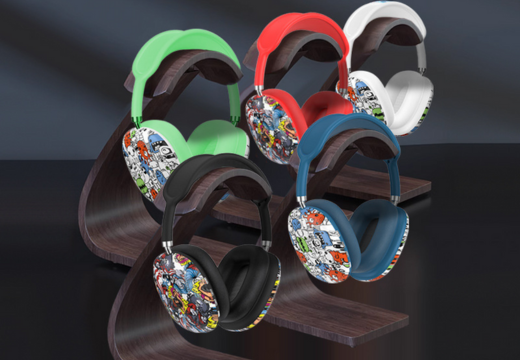How To Choose Wireless Headphones Supplier
The global wireless headphones market is experiencing explosive growth, projected to reach $40.4 billion by 2027. However, with thousands of manufacturers claiming expertise, distinguishing between reliable partners and opportunistic vendors requires strategic evaluation and due diligence.
Understanding Supplier Categories and Business Models
Manufacturer Types in the Headphones Industry
Original Equipment Manufacturers (OEMs)
Produce headphones based on your specifications and designs
Offer maximum customization flexibility
Typically require higher minimum order quantities (MOQs)
Best for: Established brands with clear product vision
Original Design Manufacturers (ODMs)
Provide existing designs that can be customized with your branding
Faster time-to-market with proven product designs
Lower development costs and risks
Best for: New brands or businesses seeking quick market entry
Contract Manufacturers
Focus purely on production execution
Require complete specifications and designs from buyers
Typically offer the most competitive pricing
Best for: Companies with in-house design capabilities
Trading Companies
Act as intermediaries between buyers and manufacturers
Provide sourcing and logistics services
May offer lower MOQs but with higher per-unit costs
Best for: Small businesses or occasional buyers
Geographic Sourcing Landscape
China (Dominant Market Leader)
Advantages: Largest manufacturing capacity, competitive pricing, established supply chains
Key Regions: Shenzhen (electronics hub), Dongguan (manufacturing center), Guangzhou (trade hub)
Considerations: Quality varies significantly between suppliers, communication barriers, longer lead times
Southeast Asia (Emerging Alternative)
Advantages: Lower labor costs, growing technical capabilities, shorter shipping to some markets
Key Countries: Vietnam, Thailand, Malaysia, Philippines
Considerations: Limited advanced technology capabilities, smaller production capacity
India (Cost-Effective Option)
Advantages: English-speaking workforce, government incentives, growing electronics sector
Considerations: Limited wireless audio expertise, infrastructure challenges
Europe/North America (Premium Quality)
Advantages: Highest quality standards, innovation leadership, proximity to key markets
Considerations: Significantly higher costs, limited production capacity
Comprehensive Supplier Identification Strategy
Primary Research Channels
Industry Trade Shows and Exhibitions
CES (Consumer Electronics Show) - Las Vegas, USA
IFA (Internationale Funkausstellung) - Berlin, Germany
Canton Fair - Guangzhou, China
HKTDC Electronics Fair - Hong Kong
Computex - Taipei, Taiwan
Benefits: Face-to-face interaction, product demonstration, immediate feedback, relationship building
B2B Online Platforms
Alibaba.com: Largest global B2B marketplace with 200,000+ electronics suppliers
Made-in-China.com: Specialized platform for Chinese manufacturers
Global Sources: Curated supplier network with verified credentials
DHgate: Focus on smaller quantities and dropshipping
EC21: Multi-regional platform with diverse supplier base
Platform Evaluation Tips:
Check supplier verification status (Gold Supplier, Trade Assurance)
Review transaction history and buyer feedback
Verify business licenses and certifications
Analyze response time and communication quality
Industry Directories and Databases
ThomasNet: North American industrial suppliers
Kompass: Global B2B directory with 15 million companies
Europages: European business directory
IndiaMART: Indian B2B marketplace
Professional Networks and Referrals
Industry associations (Consumer Technology Association, etc.)
LinkedIn professional networks
Trade publications and industry reports
Existing business partner recommendations
Advanced Sourcing Techniques
Reverse Engineering Analysis
Purchase competing products and identify manufacturers through:
FCC ID database searches
Patent filings and intellectual property records
Component supplier investigations
Factory code analysis on product labels
Supply Chain Mapping
Identify key component suppliers (Qualcomm, Broadcom for chips)
Research which manufacturers these suppliers work with
Leverage component supplier relationships for introductions
Third-Party Sourcing Agencies
Professional sourcing companies with China expertise
Quality control and inspection services
Cultural and language bridge services
Risk mitigation through local presence
Detailed Supplier Evaluation Framework
Phase 1: Initial Screening Criteria
Business Stability Assessment
Company Age: Minimum 5 years in wireless audio manufacturing
Financial Health: Annual revenue of $10M+ for stability
Market Reputation: Positive reviews from multiple verified buyers
Client Base: Serving recognizable brands or established distributors
Basic Capability Requirements
Product Range: Offering multiple wireless headphone models
Production Capacity: Minimum 50,000 units monthly capacity
Quality Certifications: ISO 9001, CE, FCC, RoHS compliance
Export Experience: Proven international shipping capabilities
Phase 2: Technical Capability Deep Dive
Manufacturing Infrastructure
Factory Size: Minimum 10,000 square meters for serious operations
Equipment Quality: SMT lines, acoustic testing chambers, automated assembly
Workforce: 200+ skilled workers with specialized training
Quality Control: Dedicated QC team with statistical process control
Research and Development Strength
Engineering Team: In-house acoustic and electronic engineers
Testing Facilities: Anechoic chambers, EMC testing, reliability testing
Innovation Pipeline: Regular new product development cycles
IP Portfolio: Patents and proprietary technologies
Supply Chain Management
Component Sourcing: Relationships with tier-1 suppliers (Qualcomm, etc.)
Inventory Management: JIT capabilities and buffer stock management
Logistics Partners: Established shipping and forwarding relationships
Risk Management: Backup suppliers and contingency planning
Phase 3: Business Partnership Evaluation
Communication and Service Quality
Language Proficiency: English-speaking sales and technical teams
Response Time: 24-hour maximum response to inquiries
Documentation Quality: Professional quotes, specifications, contracts
Time Zone Coverage: Availability during your business hours
Commercial Terms Assessment
Pricing Structure: Transparent pricing with volume discounts
Payment Terms: Flexible payment options (T/T, L/C, etc.)
Minimum Orders: Reasonable MOQs for your business size
Lead Times: Competitive production and delivery schedules
Customization and Flexibility
OEM/ODM Services: Ability to customize products to your specifications
Branding Options: Logo placement, packaging customization, color options
Rapid Prototyping: Quick sample development and modification capabilities
Scalability: Ability to grow with your business requirements
Risk Assessment and Mitigation Strategies
Common Supplier Risks and Red Flags
Quality Risks
Warning Signs: Reluctance to provide samples, vague quality specifications, no testing reports
Mitigation: Mandatory third-party inspections, quality agreements, penalty clauses
Financial Risks
Warning Signs: Requests for full payment upfront, no trade references, unclear ownership structure
Mitigation: Credit checks, trade insurance, escrow services, progressive payment terms
Operational Risks
Warning Signs: Single-source dependencies, no backup capacity, poor communication
Mitigation: Dual sourcing strategies, capacity audits, communication protocols
Compliance Risks
Warning Signs: Missing certifications, unclear regulatory knowledge, no compliance documentation
Mitigation: Certification verification, regulatory expertise validation, compliance audits
Due Diligence Checklist
Document Verification
Business license and registration certificates
Export licenses and customs documentation
Quality management system certificates (ISO 9001, etc.)
Product safety certifications (CE, FCC, RoHS, etc.)
Insurance coverage documentation
Bank references and financial statements
Physical Verification
Factory audit and inspection
Production line observation
Quality control process verification
Warehouse and logistics facility review
Management team meetings
Worker condition assessment
Reference Checks
Contact existing customers for feedback
Verify claimed production volumes
Check delivery performance history
Assess after-sales service quality
Review dispute resolution experience
Negotiation Strategies and Best Practices
Pricing Negotiation Framework
Cost Structure Understanding
Materials Cost: 40-50% of total product cost
Labor Cost: 15-20% of total product cost
Overhead: 10-15% of total product cost
Margin: 15-25% typical supplier margin
Negotiation Leverage Points
Volume Commitments: Annual purchase commitments for better pricing
Payment Terms: Faster payment for discount opportunities
Exclusivity Agreements: Geographic or market exclusivity for competitive pricing
Long-term Partnerships: Multi-year contracts for stability and better terms
Win-Win Negotiation Strategies
Value-Added Services: Request additional services instead of just price reductions
Flexible Terms: Negotiate on lead times, payment terms, or customization fees
Performance Incentives: Bonus payments for exceeding quality or delivery targets
Joint Development: Share development costs for mutual benefit
Contract Terms and Legal Considerations
Essential Contract Elements
Product Specifications: Detailed technical requirements and acceptance criteria
Quality Standards: Measurable quality metrics and testing procedures
Delivery Terms: Incoterms, lead times, and penalty clauses for delays
Pricing: Fixed pricing periods and adjustment mechanisms
Intellectual Property: IP ownership, confidentiality, and non-disclosure agreements
Warranty: Product warranty terms and defect resolution procedures
Risk Allocation
Force Majeure: Clear definitions and responsibility allocation
Quality Issues: Defect rates, recall procedures, and cost responsibility
Currency Fluctuation: Exchange rate risk management
Regulatory Changes: Compliance responsibility and cost allocation
Quality Control and Inspection Protocols
Pre-Production Quality Assurance
Sample Approval Process
Initial Samples: Evaluate basic functionality and design
Pre-Production Samples: Test final specifications and quality
Production Samples: Verify consistency with approved samples
Shipping Samples: Final quality check before shipment
Testing Requirements
Functional Testing: Bluetooth connectivity, battery life, audio quality
Durability Testing: Drop tests, hinge testing, cable stress tests
Environmental Testing: Temperature, humidity, and vibration resistance
Compliance Testing: EMC, safety, and regulatory compliance verification
Production Quality Control
Inspection Timing Options
Pre-Production Inspection (PPI): Verify materials and setup before production
During Production Inspection (DPI): Monitor quality during manufacturing
Pre-Shipment Inspection (PSI): Final quality check before shipment
Container Loading Check (CLC): Verify proper packaging and loading
Third-Party Inspection Services
SGS: Global leader in inspection and certification
Intertek: Comprehensive quality assurance services
TÃœV SÃœD: German-based testing and certification
Bureau Veritas: International testing and inspection services
Key Quality Metrics to Monitor
Defect Rate: Target <0.5% for consumer electronics
First Pass Yield: Target >95% for efficient production
Customer Returns: Track and analyze return reasons
Warranty Claims: Monitor warranty claim rates and causes
Building Long-Term Supplier Relationships
Relationship Management Best Practices
Regular Communication
Monthly Business Reviews: Discuss performance, issues, and opportunities
Quarterly Strategic Planning: Align on future product development and capacity
Annual Relationship Assessment: Evaluate partnership effectiveness and improvements
Executive Engagement: Regular communication between senior management
Performance Monitoring
Scorecards: Regular evaluation of quality, delivery, service, and cost performance
Benchmarking: Compare performance against industry standards and other suppliers
Continuous Improvement: Joint initiatives to improve processes and reduce costs
Innovation Collaboration: Work together on new product development and technologies
Mutual Benefits and Investments
Volume Commitments: Provide forecast accuracy and volume commitments
Payment Terms: Competitive payment terms and prompt payment
Exclusive Arrangements: Consider exclusivity for strategic products or markets
Joint Marketing: Collaborate on marketing initiatives and trade shows
Supplier Development Programs
Capability Building
Technical Training: Provide training on your specific requirements and standards
Process Improvement: Share best practices and lean manufacturing techniques
Quality Systems: Help implement advanced quality management systems
Technology Transfer: Share relevant technologies for mutual benefit
Financial Support
Advance Payments: Provide working capital support for large orders
Equipment Investment: Co-invest in specialized equipment for your products
Tooling Costs: Share tooling and setup costs for custom products
Insurance: Help secure appropriate insurance coverage
Digital Transformation and Modern Sourcing Tools
Technology-Enabled Sourcing
Digital Platforms and Tools
Supplier Management Systems: Centralized supplier data and performance tracking
E-Sourcing Platforms: Online RFQ and bid management systems
Supply Chain Visibility: Real-time tracking of orders and shipments
Quality Management Systems: Digital quality control and inspection reporting
Data Analytics and Intelligence
Supplier Risk Assessment: AI-powered risk scoring and monitoring
Market Intelligence: Pricing trends and competitive analysis
Performance Analytics: Advanced reporting and predictive analytics
Cost Modeling: Total cost of ownership and scenario planning
Future Trends in Supplier Sourcing
Emerging Technologies
Blockchain: Supply chain transparency and traceability
IoT: Real-time monitoring of production and logistics
AI/ML: Predictive analytics and automated decision-making
Virtual Reality: Remote factory tours and inspections
Sustainability and ESG
Environmental Standards: Green manufacturing and carbon footprint reduction
Social Responsibility: Labor practices and worker welfare
Governance: Ethical business practices and compliance
Circular Economy: Recycling and waste reduction initiatives
Conclusion: Building Your Supplier Success Strategy
Sourcing the right wireless over-ear Bluetooth headphones supplier requires a systematic approach that balances multiple factors: quality, cost, reliability, innovation capability, and strategic alignment. Success depends not just on finding a good supplier, but on building a partnership that evolves with your business needs and market demands.
The most successful sourcing relationships are built on:
Thorough due diligence and comprehensive evaluation
Clear expectations and well-defined performance metrics
Open communication and regular relationship management
Mutual benefit and long-term strategic alignment
Continuous improvement and innovation collaboration
By following this guide's framework and maintaining a strategic, long-term perspective, you can identify and develop supplier relationships that provide sustainable competitive advantage and support your business growth objectives.
Remember: The cheapest supplier is rarely the best choice. Focus on total value creation, including quality, reliability, innovation, and partnership potential. Your supplier choice will significantly impact your business success, so invest the time and resources necessary to make the right decision.




